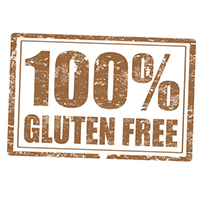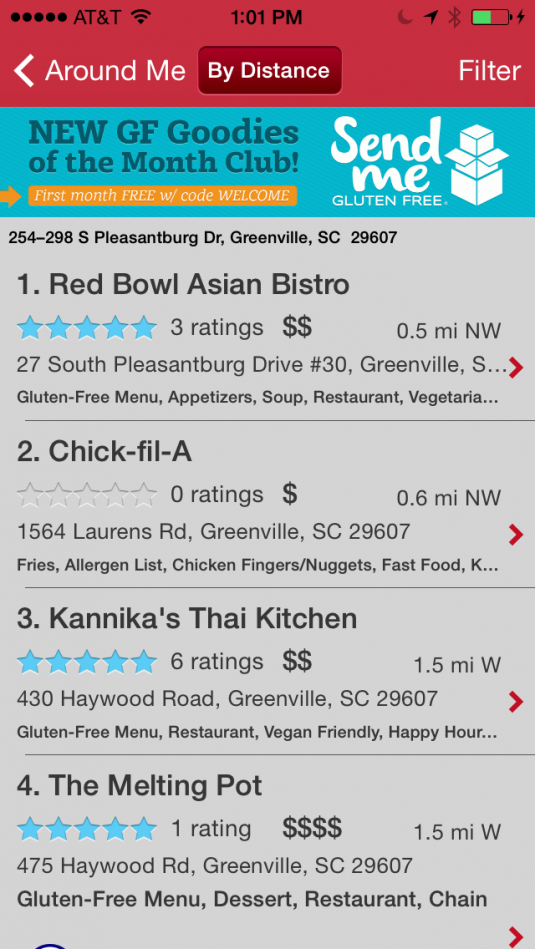Marketing Gluten-Free Products
Ten years ago, “gluten-free” was a puzzling term to many consumers. For my family and I, however, the term quickly became part of our  daily lives after my dad was diagnosed with Celiac Disease. Celiac disease is an inherited autoimmune disorder affecting the digestive process of the small intestine. An estimated 3 million Americans have Celiac Disease and consequently follow strict gluten-free diets. Besides those with Celiac, this diet has become a trend in recent years, with celebrities like Jennie Garth and Ian Somerhalder crediting it to their healthy lifestyle.
daily lives after my dad was diagnosed with Celiac Disease. Celiac disease is an inherited autoimmune disorder affecting the digestive process of the small intestine. An estimated 3 million Americans have Celiac Disease and consequently follow strict gluten-free diets. Besides those with Celiac, this diet has become a trend in recent years, with celebrities like Jennie Garth and Ian Somerhalder crediting it to their healthy lifestyle.
But for consumers who depend on gluten-free products in order to avoid the bothersome symptoms associated with a gluten allergy or intolerance, the expense and availability of products can pay its toll. Due to the increase in diagnoses and eating preferences of consumers, the portion of households reporting purchases of gluten-free food products hit 11 percent last year, rising from 5 percent in 2010, according to a Nielsen report. This continual demand for gluten-free products has opened the door for creative and informative marketing practices. Here are a few ways brands can market their gluten-free products to consumers:
Labels and menu indicators
The next time you are in a grocery store, take a closer look at the shelf labels. You’ll notice that many products are clearly labeled as gluten-free. This is helpful to shoppers who want a quick and easy shopping experience—and don’t we all. Some stores even have an aisle dedicated to gluten-free foods. Today, Wegmans is the country’s largest seller of gluten-free products.
For people following gluten-free diets, eating out can be challenging. Because you’re relying on the kitchen staff to prep your meal and aren’t sure of all the ingredients being used, you need reassurance that your meal will, in fact, be gluten-free. Recently, restaurants have been including symbols denoting gluten-free items on their menu. Fast-food chains have also started to document which foods are free of gluten or wheat. This information can usually be found in-store or online. Chick-Fil-A and Dairy Queen are just two of many examples.
Blogs
Content marketers rave about the importance of blogs, and for good reason. Blogging is a big contributor to marketing gluten-free products to consumers. People love to blog about food—whether it’s a hip new restaurant downtown or a recipe they tried for a party. Blogs about eating gluten-free are no exception. Brands like Udi’s®, named #1 gluten-free brand in America, have an active blog covering popular topics ranging from game day eats to a list of the top colleges accommodating a GF diet! If you are just beginning a gluten-free diet or want to share personal recipes or knowledge with others, these can be a great resource and a fun way to become part of a community.
Mobile App
Mobile apps are a staple in our ever-moving society. When my parents came to visit me in Greenville, SC this spring, I decided to do some homework on where to find “Celiac friendly” restaurants for my dad. After a quick search in the app store I found an app creatively named “Find Me Gluten Free.” I downloaded it and started searching for restaurants in my area.

Not only did the app provide a list of restaurants that offered a celiac friendly menu, but it went even further to specify indicators like “dedicated fryers” or “allergen list.” These may seem like simple descriptions, but those with Celiac Disease know that having a restaurant that truly understands how food preparation and cross contamination can affect a gluten-free person is a breath of fresh air. In addition to restaurant listings, the app (and accompanying website) also provides the latest reviews from customers around the country.
While finding gluten-free products may be a new venture for many, the content marketing efforts used to engage consumers is not rocket science. This growing niche market employs user-generated content to attract customers. Members of the gluten-free community consider themselves experts and want to share their experiences—good and bad—with others. Furthermore, they know what types of information others in their community are looking for and want to be the ones to close that information gap.
Can’t get enough content marketing news? Check out some more articles from our team. Click here.
Bethany Haberstroh – Content Strategist



